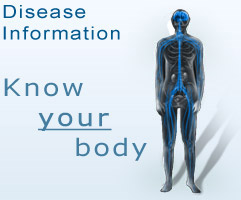Pemphigoid
What is pemphigoid?
Pemphigoid is a rare blistering condition, which usually occurs in later life; with the average age at onset being over 70 years.
The blisters appear on the skin and less often in the mouth too. This is in contrast to a related condition known as ‘cicatricial pemphigoid', in which the areas most affected by blistering are the moist surfaces of the body (mucous membranes), such as the eyes, inside the nose and mouth, and the genitals.
Another type of pemphigoid (pemphigoid gestationis) occurs during pregnancy.
What causes pemphigoid?
Nobody fully understands its cause, but pemphigoid is classed as an auto-immune condition (in which the immune system attacks the body's own tissues). For an unknown reason, antibodies (natural substances important in your body's defence) form in the blood and then attack the structures holding the outer layer of the skin (the epidermis) onto the deeper layers. This leads to splitting of the skin and results in blisters forming.
Sometimes an outside event, such as sunburn or a reaction to a drug, seems to trigger the rash but usually it occurs for no apparent reason. It is not infectious, due to allergies, or affected by diet or lifestyle.
Is pemphigoid hereditary?
No.
What are the symptoms of pemphigoid?
Itching is common. The raw areas left when the blisters break can be sore - both on the skin and in the mouth.
What does pemphigoid look like?
- A rash may be present for some weeks before any blisters come up. At that stage, the rash may look like a type of eczema or, more commonly, like the red wheals of hives.
- Blisters often appear on red patches. Any part of the skin may be affected, but the most common body parts are the limb flexures (joints) and the skin on the abdomen.
- The blisters have thick roofs, and can get quite large and tense before they burst. Most contain clear fluid, but in a few cases it may be bloodstained.
- Once the blisters heal, they do so without leaving scars.
- Roughly a quarter of patients with pemphigoid have blisters or raw areas in the mouth.
How will pemphigoid be diagnosed?
Usually the look of the rash is enough to make the diagnosis, but it is essential to get further proof:
- An examination of a biopsy taken from a small and early blister will show that it has come up just under the outermost layer of the skin (i.e. it is a sub-epidermal blister).
- Special testing (immunofluorescence) of a sample of normal skin (i.e. taken from an area where there is no blister) will show up a layer of antibodies that also lies just under the outer layer of the skin.
- The same pemphigoid antibodies can be detected circulating in the blood.
Can pemphigoid be cured?
No. Treatment helps a lot, but does not take the rash away once and for all. However pemphigoid often disappears by itself in about one to five years.
How can pemphigoid be treated?
Treatment has three aims - to stop new blisters from coming up; to heal the blisters that are already there; and to use the smallest possible dosage of medication, as side effects are so common and severe in the elderly.
- A steroid cream can help if only a small area of skin is affected. Even if the rash is more extensive, a trial of a strong steroid cream may be worthwhile before tablets are given, as creams are much less likely to cause side effects.
- Antibiotics, sometimes combined with nicotinamide, may help and can be combined with other treatments.
- Treatment for more severe blistering is usually with high doses of steroid tablets to get the pemphigoid under control quickly. This needs careful monitoring, especially in elderly patients or those taking other medication. Treatment often starts in hospital to ensure good control and so that proper dressings can be put on the blisters and raw areas. Some patients can come off their treatment gradually, usually after a few months; others will need to go on with lower doses for a long time. Calcium and vitamin D supplements, or other medications, should be given to keep your bones strong.
- Other tablets that affect the immune system can be used at the same time as the steroid tablets - the aim being to reduce the steroid dosage (i.e. to have a ‘steroid sparing' effect). The idea is that the side effects will be less troublesome if a low dosage of two tablets is used rather than a high dosage of a single type of tablet. Examples of additional tablets that can be used in this way are azathioprine (Imuran), dapsone, cyclophosphamide (Endoxana), and ciclosporin (Neoral). However, they can all cause side effects too, and their use has to be considered carefully to ensure that they are necessary. Your dermatologist will discuss this aspect of your treatment with you.
What can I do?
- Never change the dosage of the tablets you are taking without talking first to your doctor.
- Avoid hard or rough foods if you have sore areas in your mouth.
- If you are on a high dosage of steroid tablets, you may have to modify your diet to take in more protein and less carbohydrates. Consult your doctor about this before you make any changes.
Where can I get more information about pemphigoid?
Organisations
1. BRITISH ASSOCIATION OF DERMATOLOGISTS. Patient information leaflets on azathioprine, ciclosporin, dapsone and oral treatment with corticosteroids. Website: http://www.bad.org.uk
2. INTERNATIONAL PEMPHIGUS FOUNDATION, THE. Website: www.pemphigus.org/
Websites
1. EMEDICINE. Website: www.emedicine.com/derm/topic64.htm
2. MEDICINENET.COM. Website: www.medicinenet.com
3. DERMNET NZ. Website: www.dermnetnz.org
References
WOJNAROWSKA F et al. 2002. Guidelines for the management of bullous pemphigoid. British Journal of Dermatology. 147: 214 - 221.
 TransmedBanner4.jpg)

